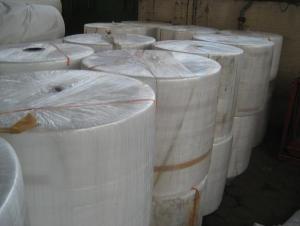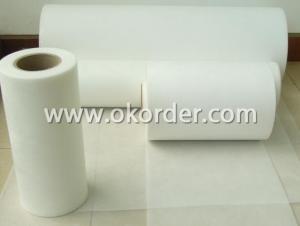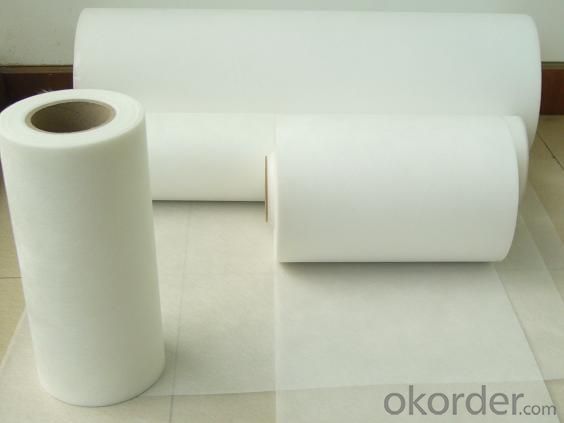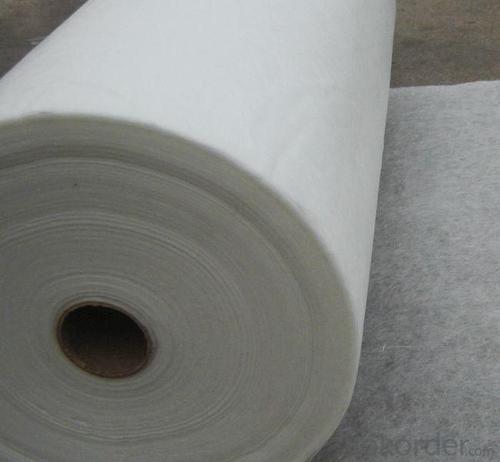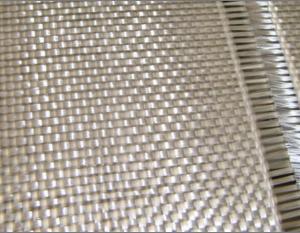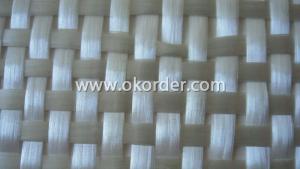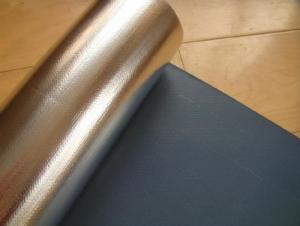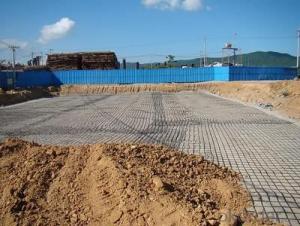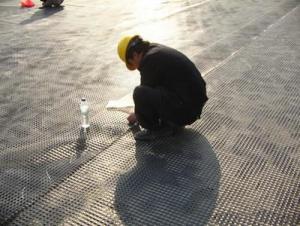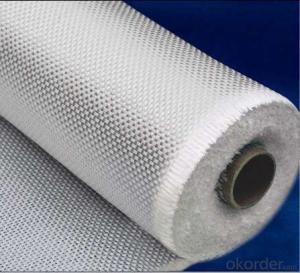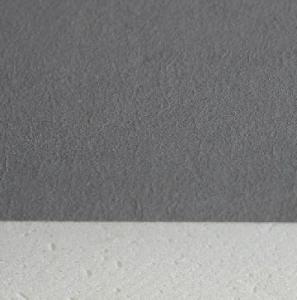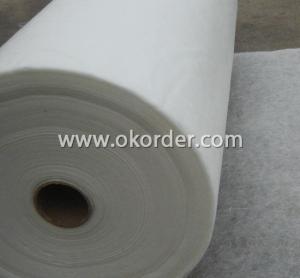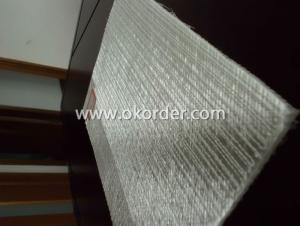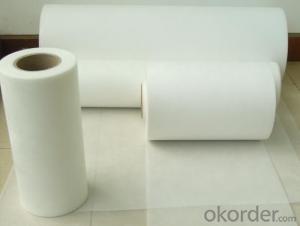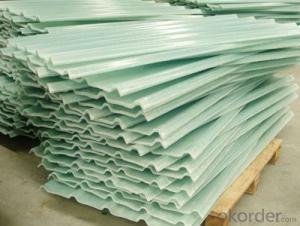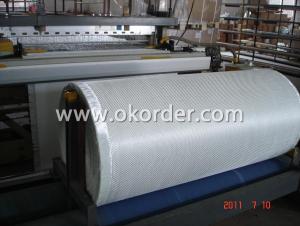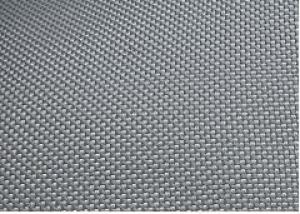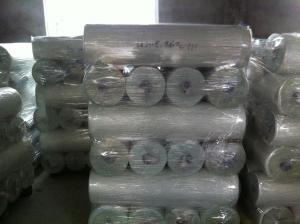Black Fiberglass Fabric RTM Mat
- Loading Port:
- China Main Port
- Payment Terms:
- TT or L/C
- Min Order Qty:
- One Pallet kg
- Supply Capability:
- 20 days for 1 x 40FCL kg/month
OKorder Service Pledge
OKorder Financial Service
You Might Also Like
Specification of FIberglass RTM Mat
1.ISO9001-2008 quality control certificate.
2.Chopped Strand Mat for RTM
3.Good wet out in resins.
Have ISO9001:2008 quality control certificate.
Chopped strand mat is suitable for application by hand lay-up, reinforce and machine FRPmolding, such as interior decoration of vehicles, boat hulls, sanitary ware, anticorrosive pipes, tanks, building materials, tables, chairs and all kinds of compisite FRP products.
Application of FIberglass RTM Mat
Product code | Glass type | Unite weight (g/m2) | Weight (mm) | Roll weight (kg) | Moisture (%) | Binder content (%) |
EMC100 | E Glass | 100+/-20 | 200-3200 | 30-70 | <0.2-0.3 | 2-6 |
EMC150 | E Glass | 150+/-20 | 200-3200 | 30-70 | <0.2-0.3 | 2-6 |
EMC200 | E Glass | 200+/-20 | 200-3200 | 30-70 | <0.2-0.3 | 2-6 |
EMC300 | E Glass | 300+/-20 | 200-3200 | 30-70 | <0.2-0.3 | 2-6 |
EMC450 | E Glass | 450+/-20 | 200-3200 | 30-70 | <0.2-0.3 | 2-6 |
EMC600 | E Glass | 600+/-20 | 200-3200 | 30-70 | <0.2-0.3 | 2-6 |
EMC900 | E Glass | 900+/-20 | 200-3200 | 30-70 | <0.2-0.3 | 2-6 |
Packing of FIberglass RTM Mat
Product is manufactured in form of a roll wound on a paper tube and then packed in a plastic film and placed within craft on pallet.
Above package is standard one, any other package style is negotiable by both of us.
Storage of FIberglass RTM Mat
It is recommended that the fiber glass is stored in a cool and dry environment. Recommended temperature range of storage is between 10-30°C and relative humidity between 50-75%. The fiber glass should store in the packaging until just prior to use.

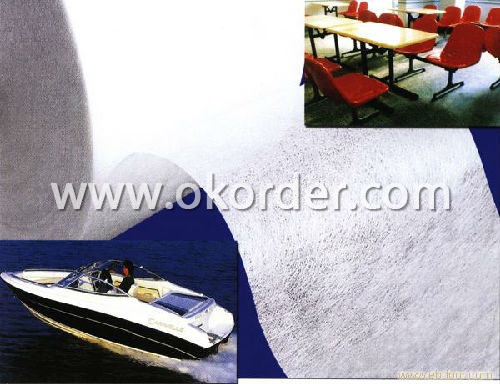
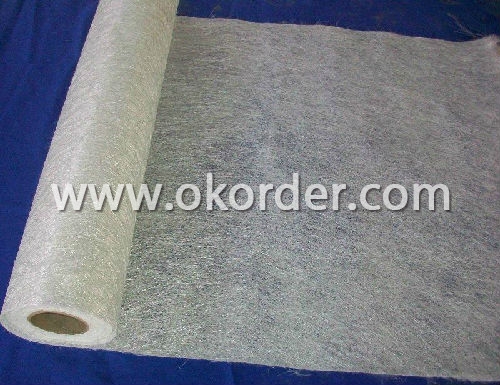
- Q: Can fiberglass fabric be used for insulation in silos?
- Indeed, insulation in silos can be achieved by employing fiberglass fabric. Renowned for its remarkable thermal insulation capabilities, fiberglass fabric emerges as a fitting option for silo insulation. By effectively hindering heat transfer, it ensures consistent temperatures within the silo, safeguarding the stored materials against drastic fluctuations in temperature. Furthermore, fiberglass fabric exhibits resistance to moisture and chemicals, rendering it a resilient and enduring insulation material for silos.
- Q: How does fiberglass fabric perform in electromagnetic shielding?
- Fiberglass fabric is widely used in various applications for electromagnetic shielding due to its excellent performance in this regard. It possesses several key characteristics that make it an effective material for blocking or reducing electromagnetic interference (EMI) and radio frequency interference (RFI). Firstly, fiberglass fabric is a non-conductive material, meaning it does not conduct electricity. This property is crucial in electromagnetic shielding as it prevents the transmission of electromagnetic waves through the fabric. Instead, the fabric acts as a barrier, reflecting and absorbing the electromagnetic energy. Secondly, fiberglass fabric has a high dielectric strength, which refers to its ability to withstand electric fields without breaking down. This characteristic ensures that the fabric can withstand intense electromagnetic fields without compromising its shielding effectiveness. Furthermore, fiberglass fabric has a high tensile strength, making it durable and resistant to damage, which is important for maintaining its shielding capability over time. It is also resistant to chemicals, moisture, and extreme temperatures, ensuring its performance is not affected by environmental factors. Another advantage of fiberglass fabric in electromagnetic shielding is its flexibility. The fabric can be easily shaped, molded, or applied to various surfaces, making it suitable for different applications. It can be used as a lining in electronic enclosures, as a wrap for cables or wires, or even as a component in protective clothing for individuals working in environments with high electromagnetic fields. In conclusion, fiberglass fabric performs exceptionally well in electromagnetic shielding applications. Its non-conductive nature, high dielectric strength, durability, and flexibility make it an ideal material for blocking or reducing electromagnetic interference and radio frequency interference. Its usage in various industries and its reliability in providing electromagnetic shielding make it a popular choice for many applications.
- Q: Can fiberglass fabric be used for insulation panels?
- Yes, fiberglass fabric can be used for insulation panels. Fiberglass is a versatile material that is commonly used for insulation due to its excellent thermal properties. It has a low thermal conductivity, which means it can effectively prevent heat transfer. Fiberglass fabric can be used to create insulation panels by layering it between other materials such as foam or rigid boards. This combination helps to trap air and reduce heat flow, making it ideal for insulating walls, ceilings, and floors. Fiberglass fabric is lightweight, durable, and fire-resistant, making it a popular choice for insulation applications.
- Q: Can fiberglass fabric be used for reinforcement in composite materials?
- Indeed, composite materials can benefit from the inclusion of fiberglass fabric as reinforcement. Fiberglass is widely employed in composites owing to its impressive ratio of strength to weight, resistance to corrosion, and endurance. Typically, the fabric consists of delicate glass fibers expertly interwoven, granting it exceptional tensile strength and adaptability. When combined with a matrix material like epoxy resin, the fiberglass fabric fortifies the composite structure, thereby improving its mechanical characteristics. Consequently, fiberglass fabric emerges as an optimal selection for industries such as aerospace, automotive, construction, and marine, where the need for lightweight, robust, and enduring materials is paramount.
- Q: What are the temperature resistance capabilities of fiberglass fabric?
- Fiberglass fabric has excellent temperature resistance capabilities, making it a popular choice for various industrial and commercial applications. It can withstand high temperatures up to 1000°C (1832°F) without any significant degradation in its mechanical or physical properties. This temperature resistance is due to the inherent properties of fiberglass, which is a composite material made from fine fibers of glass embedded in a matrix of resin or polymer. These fibers have a high melting point and can resist thermal degradation, allowing the fabric to maintain its structural integrity even under extreme heat conditions. Additionally, fiberglass fabric also exhibits good thermal insulation properties, which further enhances its temperature resistance capabilities. Overall, fiberglass fabric is well-suited for use in applications that involve exposure to high temperatures, such as insulation, fire protection, aerospace, automotive, and other industries.
- Q: Are fiberglass fabrics resistant to water absorption?
- Yes, fiberglass fabrics are generally resistant to water absorption. Fiberglass is a non-porous material, which means it does not allow water to pass through easily. This makes it highly resistant to water absorption. When used in fabrics, fiberglass is often coated with a water-resistant finish or treated with chemicals to further enhance its resistance to water absorption. This makes fiberglass fabrics suitable for a variety of applications where water resistance is important, such as in outdoor clothing, marine equipment, and waterproofing materials. However, it is important to note that while fiberglass fabrics are resistant to water absorption, they may not be completely waterproof. In extreme conditions, such as prolonged exposure to heavy rain or submersion in water, some water may eventually seep through the fabric.
- Q: What is the difference between woven and non-woven fiberglass fabric?
- Woven and non-woven fiberglass fabrics share a common origin in fiberglass fibers, yet they vary in terms of their construction and characteristics. Woven fiberglass fabric is produced by interlacing individual fiberglass strands in a crosshatch pattern to create a resilient and robust fabric. This weaving process yields a fabric with a consistent and uniform appearance akin to conventional textiles. Woven fiberglass fabrics are recognized for their durability, pliability, and exceptional dimensional stability. They are commonly employed in applications that necessitate high tensile strength, such as reinforcing materials for composite structures, boat construction, the aerospace industry, and automotive components. Conversely, non-woven fiberglass fabric is fashioned by fusing or matting the fiberglass fibers together using diverse techniques, such as needle punching or chemical bonding. Unlike woven fabrics, non-woven fiberglass fabrics lack a regular weave pattern and may exhibit a more arbitrary fiber orientation. This construction method confers distinct properties upon non-woven fiberglass fabrics, including high absorbency, thermal insulation, and filtration capabilities. Due to their structure, non-woven fiberglass fabrics are frequently utilized in insulation materials, filtration media, soundproofing, and as roofing material reinforcement. In essence, the primary distinction between woven and non-woven fiberglass fabrics resides in their construction and resultant properties. Woven fabrics provide strength, stability, and flexibility, rendering them suitable for structural applications, whereas non-woven fabrics deliver absorbency, insulation, and filtration properties, making them ideal for applications that necessitate these specific characteristics.
- Q: Outside wall coating does not hang, what effect does glass fiber cloth have?
- If you do not install anti crack net, in addition to cracking on the wall, the other does not affect. I hope my answer can help you
- Q: What are the main properties of fiberglass fabric?
- The main properties of fiberglass fabric include high tensile strength, excellent heat resistance, good dimensional stability, and strong chemical resistance. It is also lightweight, durable, and has low thermal conductivity. Additionally, fiberglass fabric is non-flammable and provides good insulation properties.
- Q: Can fiberglass fabric be used for car covers?
- Yes, fiberglass fabric can be used for car covers. Fiberglass fabric is known for its durability and resistance to tearing, making it a suitable material for protecting cars from various external elements such as dust, dirt, and UV rays. It is also lightweight, easy to handle, and can be easily customized to fit different car sizes and shapes. Additionally, fiberglass fabric has excellent heat insulation properties, which can help protect the car's interior from extreme temperatures. However, it is important to note that fiberglass fabric on its own may not be waterproof, so it is recommended to use a waterproof coating or layer underneath the fabric for added protection against rain and moisture.
1. Manufacturer Overview
| Location | Zhejiang, China |
| Year Established | 1969 |
| Annual Output Value | Above US$ 150 Million |
| Main Markets | overseas companies in Hongkong, Canada, South Africa, South Korea, India, Italy, Singapore, France and many other countries and regions. |
| Company Certifications | ISO9001;ISO14001 |
2. Manufacturer Certificates
| a) Certification Name | |
| Range | |
| Reference | |
| Validity Period |
3. Manufacturer Capability
| a) Trade Capacity | |
| Nearest Port | Shanghai |
| Export Percentage | 40%-50% |
| No.of Employees in Trade Department | 21-50 People |
| Language Spoken: | English |
| b) Factory Information | |
| Factory Size: | Above 5000,000 square meters |
| No. of Production Lines | Above 5 |
| Contract Manufacturing | |
| Product Price Range | Average |
Send your message to us
Black Fiberglass Fabric RTM Mat
- Loading Port:
- China Main Port
- Payment Terms:
- TT or L/C
- Min Order Qty:
- One Pallet kg
- Supply Capability:
- 20 days for 1 x 40FCL kg/month
OKorder Service Pledge
OKorder Financial Service
Similar products
Hot products
Hot Searches
Related keywords

